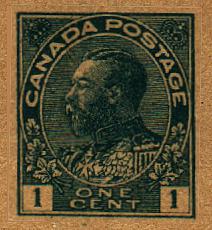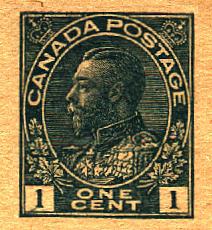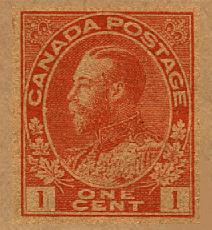
Post bands and wrappers are pre-stamped bands of paper used in the mailing of bulky matter such as newspapers. Post bands were sold to the public beginning in 1875. The first stamp designs for post bands included fancy scrollwork. Wrappers, which were to be used only by publishers for the sole pupose of mailing second class matter to the United States, became available in 1903. In 1898, the stamp design changed to match the design of the currently issued postage stamp for the drop letter rate of the time. The last wrapper contained the image of the 1954 two-cent green Karsh issue, and the last post band issued in Canada contained the image of the 1964 two-cent green Cameo issue.
Post bands are 121-127mm wide and 241-279mm long, and are gummed. Wrappers are 152-203mm wide by 336-381mm long and are not gummed.
Wrappers contain a two-line restriction notice, in the same colour as the stamp, and in unserifed capital letters, saying: "This wrapper is to be used only by publishers and for the sole purpose of mailing second class matter to the United States."
The ones produced containing the Admiral design are found on wove paper, which has a slight weave-like grain that can be seen when held up to the light, and laid paper, which shows alternate light and dark lines when held up to the light.

The unusual shapes of the matter used with post bands and wrappers, made it impractical to postmark them. Examples exist of the one-cent orange with a Vancouver city pre-cancel, however.
Three dies were issued in the production of Admiral issue imprints for post bands and wrappers.
 Die I |
 Die II |
 Die III |
The one-cent green value was issued beginning, it is believed, in 1912. While the wrapper version may be found with both Die I and Die II engravings, only Die II was used for the post band version of the one-cent green.
The colour of the stamp was changed to orange in 1922 in accordance with international agreement. The orange coloured stamp may be found in Die I and Die II cuts in both post band and wrapper versions. It is believed that Die III engraved post band and wrapper stamps were produced beginning in 1927.
Updated: 5 Oct 97